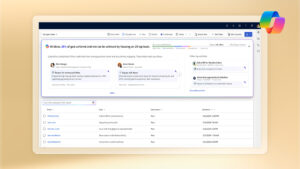
Why industry leaders are making the switch to Connected Field Service
Change across organizations, markets and industries is usually steady and predictable, with occasional jump starts that can spark innovation—typically fueled by the intersection of new technology with market demand. This phenomenon is happening right now in Field Service as competitive pressure forces organizations to rethink how to keep customers satisfied by ensuring 100 percent uptime and hyper-speed service delivery.
In the pursuit for exceptional customer experiences, field service has become a frontline for exceptional customer service—the direct link for competitive differentiation across nearly every industry, from retail to telecommunications, manufacturing to utilities. And that means a rapid move away from break-fix models to proactive and predictive service; from standard delivery times to express service all the time; and the ability for field staff to have a 360-degree view of customers to help sell the right set of solutions.
This new, rapidly-emerging model—connected field service—requires an investment in people and technology. A move from legacy systems to cloud-based services and solutions, Internet of Things (IoT) integration, mobile-connected field teams and Mixed Reality technologies. The question on the minds of many executive leaders is timing and ROI. What is the optimal service model? What technology stack will provide long-term returns? And how soon will the investment pay off?
Would you believe that an organization can see a return in as little as four months? That’s the timeframe for MacDonald Miller Facility Solutions, a professional services company revolutionizing facilities management using Microsoft Dynamics 365 for Field Service, Microsoft Azure IoT services, and Microsoft partner ICONICS Smart Building Software.
By adopting the Microsoft Connected Field Service Solution, MacDonald-Miller Facility Solutions found that by taking a more proactive approach to customer care, they could save time, money, and maintain their status as a high-performing industry leader— despite the complications that naturally arise from juggling multiple interlocking and complicated systems.
This adoption would be a different kind of challenge and drastically change how the company tackled maintenance: fully integrating disparate systems into one easily accessible location and CRM for information, diagnostics, and repairs. Now, technicians would be armed with a full history when they were deployed, and with all the necessary tools to make a repair that day— sometimes even before the building maintenance knew it was needed. Integrating this solution of Microsoft Dynamics 365 with Azure IoT Hub into their already tech-savvy workflow allowed them to reduce the time-to-completion for service calls by nearly two weeks, increase profits for their customers, and save even more energy.
So far, it’s been a popular change with customers: The average customer sees between 10 and 20 percent energy savings.
[msce_cta layout=”image_center” align=”center” linktype=”blue” imageurl=”https://www.microsoft.com/en-us/dynamics-365/blog/wp-content/uploads/2018/09/xpB4-SaB6pJxf9BBn67vG0y40TMsx2QW.jpg” linkurl=”https://embed.vidyard.com/share/zYMeWNsVcZR6gQWrN5uPr7?” linktext=”Watch MacDonald Miller Facility Solutions success story video” imageid=”11404″ ][/msce_cta]
Customer experience is the center of digital transformation: providing a great, memorable customer experience should be the North Star guiding your business decisions. By making a bold and creative choice to switch, MacDonald-Miller Facility Solutions was able to pass on their savings to their customers, give them accurate energy readings, and ensure a smooth future customer experience. They also managed to make back their investment in 4 months, proving that sometimes, when pursuing better and better customer service, it pays to be bold.




